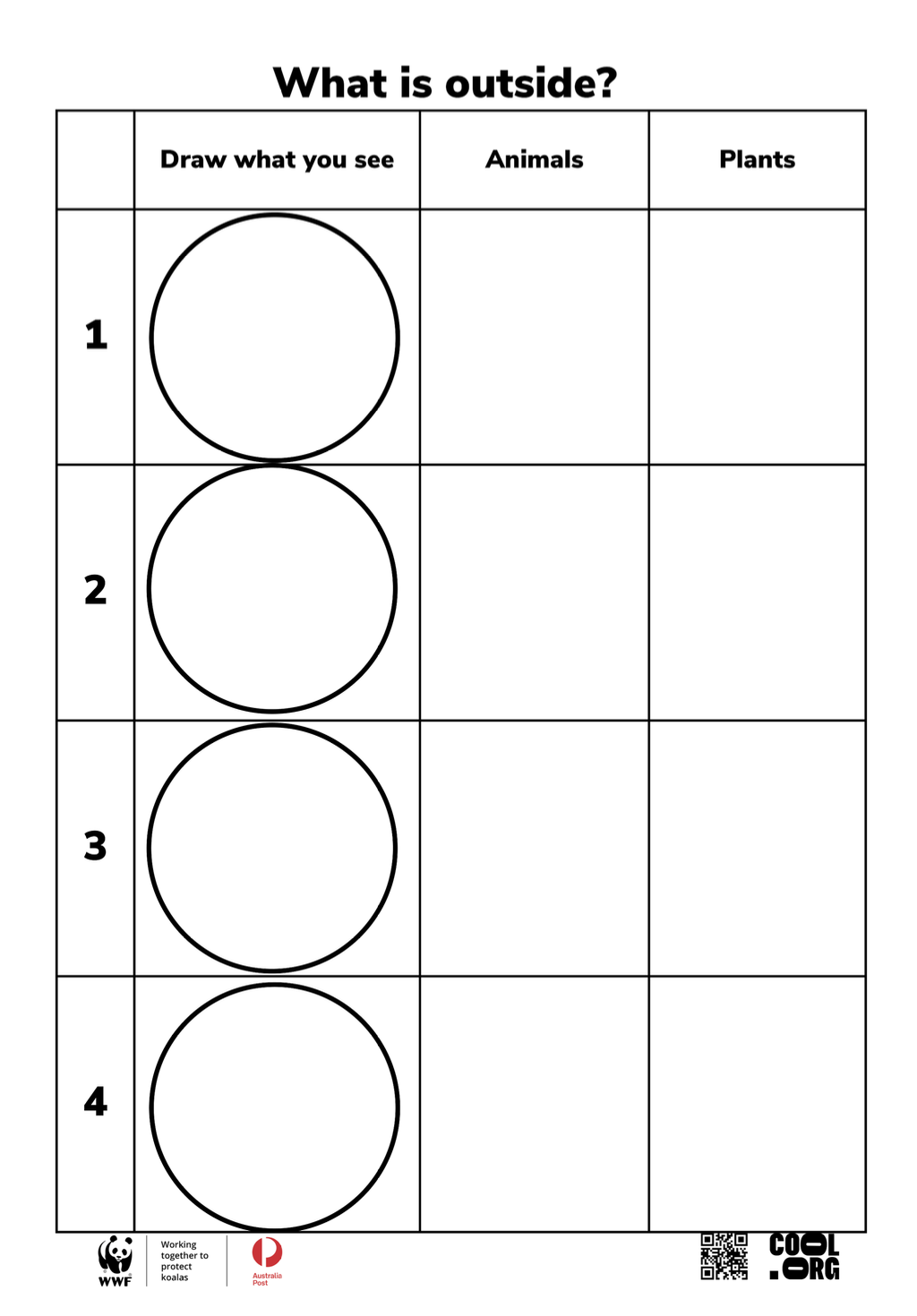Lesson summary
What do koalas need in a habitat? Let’s explore what koalas need in their environment before we head outside and see what is in our school environment and what lives there. Students will explore biodiversity and how biodiversity creates healthy habitats.
Learning intentions:
Students will...
- investigate what koalas need from their habitat and then explore their school environment to see if it is a suitable home for koalas.
Success criteria:
Students can...
- describe the required habitat of koalas
- identify animals and plants that their school environment provides habitats for.
Lesson guides and printables
View Supporting Resources
Curriculum links
Select your curriculum from the options below.
Lesson details
Skills
This lesson is designed to build students’ competencies in the following skills:
- critical thinking
- collaboration
- curiosity
- reflection
Curriculum Mapping
Australian Curriculum (v9.0) content description: Year 1 & 2, Science
- identify the basic needs of plants and animals, including air, water, food or shelter, and describe how the places they live meet those needs (AC9S1U01)
- compare observations with predictions and others’ observations, consider if investigations are fair and identify further questions with guidance (AC9S1I05 & AC9S2I05)
Relevant parts of Year 1 & 2 achievement standards: Students identify how living things meet their needs in the places they live. Students pose questions to explore observed relationships and make predictions based on experience. They suggest steps to be followed in an investigation and follow safe procedures to make and record observations.
NSW Syllabus outcomes:
- ST1-1WS-S observes, questions and collects data to communicate and compare ideas
- ST1-4LW-S describes observable features of living things and their environments
General capabilities: Critical and Creative Thinking, Literacy, Numeracy, Personal and Social Capability
UN Sustainable Development Goals
UN SDG 15: Protect, restore and promote sustainable use of terrestrial ecosystems, sustainably manage forests, combat desertification, and halt and reverse land degradation and halt biodiversity loss
- Target 15.2 By 2020, promote the implementation of sustainable management of all types of forests, halt deforestation, restore degraded forests and substantially increase afforestation and reforestation globally
Resources Required
- Device to share visual explainer and video with the class
- Hula-hoops (1 per group)
- ‘Looking closely’ tools - a range of magnifying glasses, small mirrors, cardboard tube telescopes, and other tools to encourage students to look closely at the environment
- Student worksheet, clipboard and pencil (1 per group)
Additional Info
This lesson has been created in partnership with WWF-Australia and made possible thanks to its proud supporter, Australia Post.
In 2022, koalas on Australia’s east coast were officially listed as an endangered species, after dramatic population decline. Habitat destruction, climate change and extreme weather events including bushfires and floods have had a significant impact on koalas.
As one of Australia’s most trusted conservation organisations, WWF is working tirelessly to turn this tragedy around with Australia Post joining them in their mission to double koala numbers across eastern Australia by 2050.
Related Professional Learning
Meet the NQS by Caring for the Environment
Education and care settings are places where children learn about self, others and the world. National Quality Standard (NQS) Element 3.2.3 requires every early childhood service to care for the environment and support children to become environmentally responsible.





Welcome back!
Don't have an account yet?
Log in with:
Create your free Cool.org account.
Many of our resources are free, with an option to upgrade to Cool+ for premium content.
Already have an account?
Sign up with:
By signing up you accept Cool.org's Terms and Conditions(Opens in new tab) and Privacy Policy(Opens in new tab).